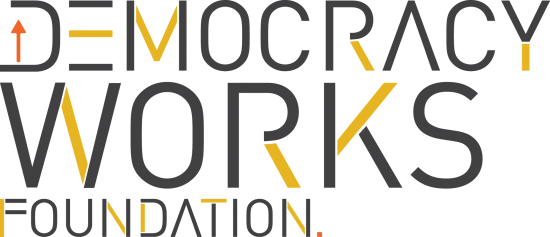A consideration of voter turnout compared to general protests by citizens suggests that South Africans are currently suffering from institutional disaffection rather than political disengagement.
Political disaffection exists in two permutations, according to Mariano Torcal and Jose Ramon Montero. The first is institutional disaffection, where a confidence gap emerges owing to the lack of responsiveness by public representatives. The second, political disengagement, encompasses a general distrust of politics and lack of engagement with political process.
In new democracies, disaffection may not lead to increased non-conventional political action but rather to decreased political involvement. Still, recent evidence in other African countries indicates a shift from previous responses of disengagement from the state when service delivery falters to a new trend where social actors persist in placing demands on the state. Similarly, while representative democracy in South Africa at first glance exhibits the typical ill of disengagement associated with this model, closer inspection may suggest a different picture.
Withdrawal from the electoral process, which is the bare minimum requirement for democratic representation, signals the first sign of trouble. After just two decades of universal franchise, SA voter turnout as a proportion of the voting age population dropped from 86% in 1994 to 57% in 2014. The steady decrease in the overall voter participation rate since 1994 suggests that the ability of the ANC to capture the popular imagination as former liberation movement is shrinking. The trends show not only a decrease in voter turnout but also a decrease in ANC support, from 70% in 2004 to 62% in 2014. Of the voting age population, its support dropped from between 39-40% for the 2004 and 2009 elections to 35% in the 2014 election, according to research by Collette Schulz-Herzenberg.
These figures also reflect a crisis in opposition politics, as the plethora of smaller parties are unable to provide adequate alternatives to mobilise voting. The only party to significantly buck the trend, particularly with reference to the 2014 election, is the largest opposition party the Democratic Alliance (DA), which grew its support to 22% in 2014, breaking through the 20% ceiling that the National Party, the erstwhile apartheid rulers, set for opposition party support in the first democratic election in 1994.
The basic deficit of representative democracy could be to blame for reduced participation in elections so soon after democratic transition. This is namely that representative democracy’s primary achievement, elections, amount to one-way communication and are paradoxical, because the act of direct citizen power participation those citizens delegate their power. This deficit is worsened by the Schumpeterian version of representative democracy, influential in the global north. In this version, democracy is merely a way to make public decisions. It reduces democracy to formal procedures pursued by collective representative actors. Thus citizens do not have much of a role to play and public apathy becomes regarded as a strength indicating consent and diffusing support for the regime and mode of operation.
To further unpack the implications of this model, it is useful to approach democracy as a set of teachings. Claus Offe argues that institutional practices condition ‘the understanding of what the system is about and what the relevant alternatives are’: in the ongoing tussle that is democracy, ‘[w]e learn what “we” the citizens “are” through the hidden curriculum of day-to-day politics and its formative impact’. Thus political institutions ‘make’ citizens by engendering in them and political elites a view of obligations, opportunities and meanings.
However, these impressions of duties and possibilities may be ameliorated or exacerbated by countries’ histories. Also, given the strictures of globalised political economy, party-politics and media workings that circumscribe choice, political elites may opt for whatever is on offer and not comply with the letter and spirit of institutional rules. Offe proposes that citizens’ disaffection is a consequence of institutional practices. In South Africa, institutional disaffection seems to be a result of the ruling ANC’s assault on a variety of institutions, especially those in the criminal justice system. Parliament has not escaped, placing representative democracy under direct pressure. Indeed, owing to the arms deal, the legislature was one of the earliest victims and saw its most powerful committee, the standing committee on public accounts (Scopa), hobbled. The ANC politicises institutions, which weakens or paralyses them and inhibits their ability to execute their constitutionally mandated functions. Simultaneously, the ANC also attempts to demobilise civil society and the citizenry at large, and is aided in its attempts by the globally prevailing neoliberal prescription of depoliticisation. Moreover, in the Schumpeterian tradition, the ANC uses the distancing effects of representative democracy to obviate accountability to the public.
Nevertheless, while the ANC seems to be a good pupil of global regimes of depoliticisation, South Africans are not as obedient as the intensity and timing of protests indicate. Simultaneously with the reduction in participation in narrow electoral politics, citizens demand accountability through direct political action in the streets. Following Elaine Spitz’s argument, majorities are not passive, as some democratic theories seem to suggest, but reconstituted all the time as they use every method at hand to demand accountability from the elected: elections, petitions, demonstrations, civil disobedience, violent resistance, and competition.
In South Africa, shrinking voter turnout coincides with growing community-based protests that have been dubbed a ‘rebellion of the poor’ by Peter Alexander. Police figures show between 8000 and 11000 incidents of ‘crowd management’ from 2004 to 2012. The Civic Protest Barometer shows protests aimed specifically at service delivery shifted from just below 100 in 2007 to a new maximum of 218 in 2014, with specific increases in the election years of 2009 and 2014. Therefore, protestors direct their demands at elected representatives, which suggest they remain convinced that representatives can respond to their needs using the levers of state. Also, protests peak in election years, suggesting they are targeted to coincide with a time when politicians are most aware that their positions are contingent upon voters’ choices. This would suggest that while South Africans may have become disillusioned with democratic institutions, they remain politically engaged. Moreover, they continue to demand accountability from elected representatives and therefore make democratic institutions work for them.
*This article was published by the SABC and can be viewed here.








